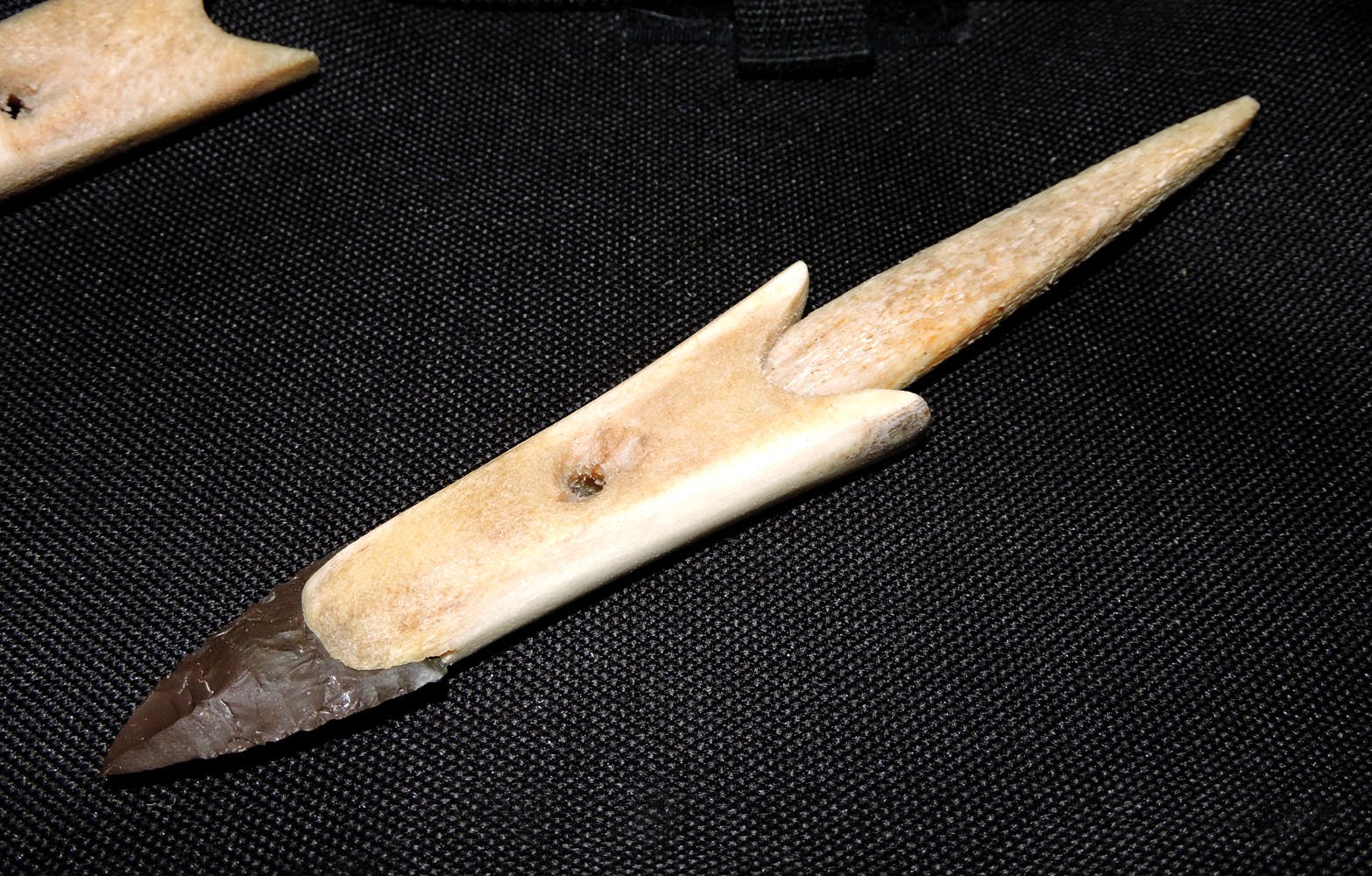 |
| Not quite everything you need to harpoon a seal... |
I have a Dorset Palaeoeskimo harpoon beginning to take shape. I had hoped to have it finished by the end of this week, but that didn't happen. I find tip-fluting the endblade is the trickiest part of making a reproduction of one of these light sealing harpoons and with that difficult bit of knappery done, I hope that the rest of the build should be fairly straightforward. Unless the client makes a special request, I tend to use the Middle Dorset harpoon heads from Port au Choix as my reference pieces for these harpoons. In the photo on the right, the reproduction endblade is knapped from Newfoundland chert, the harpoon head is antler and the foreshaft is whalebone. We have a pretty good idea what these parts of the Dorset harpoon look like because these pieces have a good chance of being preserved archaeologically, especially the stone endblade. The rest of the harpoon was likely wood, sinew, and leather and preservation of those parts is much more rare.
 |
| The endblade, harpoon head, and foreshaft fit together. |
Photo Credits: Tim Rast


So cool, brother. I hope you get the chance to use it hunting!
ReplyDeleteThank! This one is intended for a University teaching collection in Ontario, so it probably won't see many seals. Maybe next time.
DeleteTip fluting looks very difficult. Do you somehow remove a flake from either side of the pointy end? Or, can you explain a bit more? Very interesting and beautiful work.
ReplyDeleteNever mind. I found your other post that describes tip fluting in more detail. Thanks for sharing!
ReplyDeleteYeah, it's kind of tricky. Basically, it finishes with two flakes removed from the ventral surface from the tip. Sometimes its necessary to remove a central flake first and then use it's left and right ridges to remove the left and right tip-flute. I tend to have the best luck using pressure flaking, but the real artifacts often have much bigger flutes than I can achieve with pressure alone. I think indirect percussion was probably used by the Dorset to tip-flute their endblades.
Delete